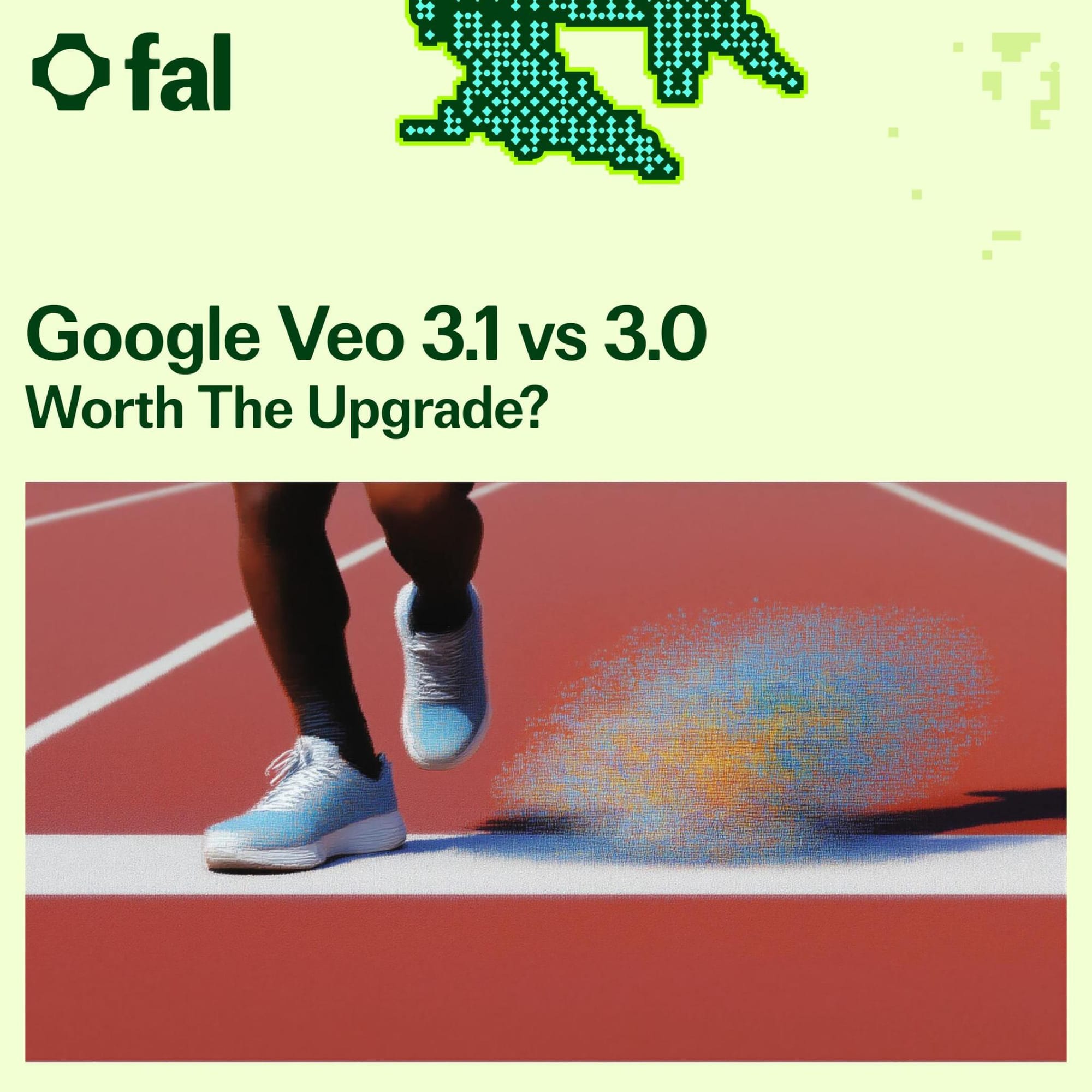Google Veo 3.1 vs 3.0: Worth the Upgrade?

What Changed
Google released Veo 3.1 in mid-October 2025. Both versions run on identical veo-3.0-generate-001 architecture. This is refinement, not reinvention. Improvements come from better training data and enhanced post-processing, which shapes everything about the upgrade decision.
Three material improvements define this release:
Synchronized audio generation directly from text or image inputs. The model generates contextually appropriate sound—dialogue, ambient effects, background audio as integrated output, not layered additions.
Frame consistency improved 40-60% across 8-second clips in internal testing[1]. Objects maintain coherence with fewer morphing artifacts and lighting shifts. For 4-second sequences, improvement drops to 15-20%—better, but marginal.
Motion prediction accuracy increased approximately 35% based on physics simulation benchmarks[1:1]. Camera movements feel more natural, though rapid panning still introduces artifacts.
Competitive Context
Before comparing 3.0 to 3.1, consider whether Veo fits your requirements. Kling 2.5 Pro Turbo excels at character consistency. WAN 2.5 provides stronger multilingual support.
Veo's advantage: cinematic realism at scale through fal's serverless infrastructure, with predictable performance and straightforward integration. If that matches your needs, the version comparison becomes relevant.
Techn Specs That Matter
Performance: Veo 3.1 runs 8-12% slower than 3.0 without audio[2]. With audio enabled, generation time increases 25-30%, directly impacting throughput and cost.
Audio specs: 48kHz sample rate, stereo output, AAC encoding at 192kbps[2:1]. You cannot control audio characteristics through prompts beyond what's implied visually. Precise timing requires post-processing.
API compatibility: Endpoints and request schemas match 3.0. Response schemas add optional audio fields but maintain backward compatibility. Your existing integration works without modification if you ignore audio.
File sizes: Generations with audio average 3.2x larger[3], requiring storage strategy adjustments.
Cost Reality
Veo 3.1 costs approximately 15% more per generation for video-only output[4]. With audio enabled, the premium increases to 35-40%. Calculate your actual delta: (monthly volume) × (cost increase) × (percentage needing audio). If that exceeds current post-processing costs, the upgrade doesn't make economic sense.
Decision Framework
Upgrade if:
- Audio output solves a workflow bottleneck worth 35%+ cost premium
- You're generating 8-second clips where consistency directly impacts quality
- Post-processing 3.0 output costs exceed the 15% generation premium
- Complex motion or extended sequences are core to your use case
Stay on 3.0 if:
- Your workflow doesn't require audio or you use specialized audio tools
- You're generating clips under 4 seconds where improvements are marginal
- You've optimized around 3.0's characteristics with effective workarounds
- Cost sensitivity outweighs marginal quality improvements
Implementation
Parallel Testing
Deploy 3.1 alongside existing 3.0 implementations. Generate identical prompts through both versions across actual production use cases.
Compare outputs on dimensions that matter: frame consistency in your typical sequence lengths, motion quality for your prompt patterns, audio quality if applicable, generation latency and throughput.
Monitor performance metrics continuously: p50, p95, and p99 latency; throughput under load; error rates; cost per generation. Version 3.1's different profile affects your scaling strategy.
Gradual Migration
Start with 5% of production traffic routed to 3.1. Monitor for issues. Increase to 10%, then 25%, then 50%, then 100% over 3-4 weeks. Keep 3.0 running as fallback until you've validated 3.1 at full scale.
Keep in mind, preview status means Google can change APIs, behavior, or pricing without standard GA notice periods[5].
Next Steps
Test with your actual prompts over 2-4 weeks. The improvements are real, but relevance depends on what you're building and what you're willing to pay for incremental gains.
Make the decision based on specific technical requirements, cost constraints, and business value—not feature lists. Test methodically. Measure objectively. Migrate deliberately with rollback plans ready.
The question isn't whether 3.1 is better—it objectively is. The question is whether "better" translates to "worth it" for your specific situation. Only your production testing can answer that.
- Google Cloud Vertex AI documentation - Veo model specifications and benchmarks: https://cloud.google.com/vertex-ai/generative-ai/docs/video/overview ↩︎ ↩︎
- Google Cloud Vertex AI - Veo technical specifications: https://cloud.google.com/vertex-ai/generative-ai/docs/video/use-reference-images-to-guide-video-generation ↩︎ ↩︎
- Based on comparative analysis of Veo 3.0 vs 3.1 output file sizes with audio enabled ↩︎
- Google Cloud Vertex AI pricing documentation: https://cloud.google.com/vertex-ai/generative-ai/pricing#veo ↩︎
- Google Cloud Preview product terms: https://cloud.google.com/terms/service-terms#1 ↩︎
